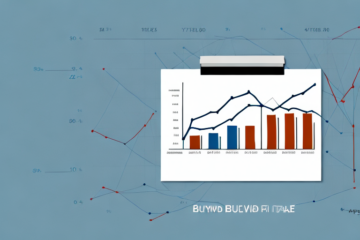What is a 12B-1 Plan? Understanding the Basics of a Financial Term
When it comes to investing, there are many financial terms and concepts that can seem daunting at first. One term that you may come across in the world of mutual funds is a 12B-1 Plan. In this article, we will dive deep into the history, features, fees, benefits, drawbacks, evaluation, disclosure requirements, comparison, financial advisor’s role, and future of this interesting financial term to help you understand what it is and how it works.
The History of 12B-1 Plans and Their Evolution Over Time
12B-1 plans were first introduced by the SEC back in 1980 as a way for mutual fund companies to support the marketing and distribution of their funds. Essentially, these plans allow mutual fund companies to use shareholders’ assets to pay for promotional and distribution expenses. Over time, the use of 12B-1 plans has expanded, with some funds using them to pay for a broker’s commission, or to generate revenue for the mutual fund company.
However, the use of 12B-1 plans has also been criticized for their lack of transparency and potential for abuse. In 2010, the SEC implemented new rules requiring mutual fund companies to disclose the fees associated with 12B-1 plans more clearly to investors. Despite this, some critics argue that the fees are still too high and that investors may not fully understand the impact of these fees on their investments. As a result, there has been ongoing debate about the role and regulation of 12B-1 plans in the mutual fund industry.
How 12B-1 Plans Work and Their Key Features Explained
12B-1 plans allow mutual fund companies to use a portion of the fund’s assets to pay for expenses related to promoting and distributing the fund. Typically, these plans charge a fee, expressed as a percentage of the fund’s assets, to cover these expenses. There are several key features of 12B-1 plans to understand, such as the fee structure, the types of expenses covered, and the impact on investors.
One important aspect to consider when evaluating 12B-1 plans is the impact on investment returns. The fees charged by these plans can eat into the returns earned by investors, potentially reducing the overall performance of the fund. Additionally, some critics argue that 12B-1 plans can create conflicts of interest for financial advisors, who may be incentivized to recommend funds with higher fees, even if they are not the best option for their clients. It is important for investors to carefully consider the costs and benefits of 12B-1 plans before making investment decisions.
The Different Types of 12B-1 Fees and Their Impact on Investments
There are two types of 12B-1 fees: distribution fees and marketing fees. Distribution fees cover expenses related to the selling of shares, while marketing fees cover expenses related to advertising and promoting the fund. These fees can have a significant impact on an investor’s return, as they are charged as a percentage of the fund’s assets.
It is important for investors to understand the impact of 12B-1 fees on their investments. While these fees may seem small, they can add up over time and significantly reduce an investor’s returns. In addition, some funds may charge higher 12B-1 fees than others, so it is important to compare fees when selecting a fund.
Investors should also be aware that 12B-1 fees are not the only fees associated with mutual funds. There may be additional fees, such as management fees and administrative fees, that can also impact an investor’s returns. It is important to carefully review a fund’s prospectus and fee schedule before investing to fully understand the costs involved.
The Pros and Cons of Investing in Funds with 12B-1 Plans
There are several potential benefits and drawbacks of investing in funds with 12B-1 plans. On the one hand, these plans can help fund companies attract and retain investors through marketing and distribution efforts, and can provide a source of revenue for the fund company. On the other hand, these fees can detract from investment returns and can be confusing and difficult to understand for investors.
One potential benefit of 12B-1 plans is that they can help investors access a wider range of investment options. This is because the fees generated by these plans can be used to cover the costs of researching and selecting new investments, which can be particularly beneficial for smaller funds that may not have the resources to do this on their own. However, it is important for investors to carefully consider the fees associated with these plans and to ensure that they are getting value for their money.
Another potential drawback of 12B-1 plans is that they can create conflicts of interest between fund companies and their investors. This is because the fees generated by these plans can incentivize fund companies to prioritize marketing and distribution efforts over investment performance. As a result, investors may end up paying higher fees for investments that do not necessarily provide the best returns. To mitigate this risk, investors should carefully review a fund’s prospectus and seek out independent advice before investing in any fund with a 12B-1 plan.
How to Evaluate the Cost-Effectiveness of a 12B-1 Plan for Your Investment Goals
When it comes to evaluating whether a 12B-1 plan is right for your investment goals, there are several factors to consider. These include the overall cost of investing, the performance of the fund, and the value of the marketing and distribution efforts. It is also important to weigh the potential benefits of a 12B-1 plan against the potential drawbacks.
One potential drawback of a 12B-1 plan is that it can increase the overall expense ratio of a fund, which can eat into your returns over time. Additionally, some investors may prefer to invest in funds that do not charge 12B-1 fees, as they may view these fees as unnecessary expenses. However, it is important to note that 12B-1 fees can help fund companies attract new investors and retain existing ones, which can ultimately benefit the fund’s performance and your investment returns.
Understanding the Disclosure Requirements for 12B-1 Fees and Expenses
Under SEC rules, mutual funds that have 12B-1 plans are required to disclose certain information about the fees and expenses associated with the plan. This information must be presented in a clear and understandable manner and must be made available to investors before they invest.
Comparing 12B-1 Plans to Other Types of Mutual Fund Fees and Expenses
When evaluating mutual fund fees and expenses, it is important to understand how 12B-1 plans compare to other types of fees and expenses. For example, management fees cover the cost of managing the fund’s portfolio, while expense ratios cover all expenses associated with running the fund. By understanding the differences between these types of fees and expenses, investors can make more informed decisions about their investments.
Another type of fee that investors should be aware of is the front-end load fee. This fee is charged when an investor purchases shares in a mutual fund and is typically a percentage of the total investment amount. Unlike 12B-1 fees, which are ongoing, front-end load fees are a one-time charge. However, they can significantly reduce the amount of money an investor has to invest in the fund initially. It is important to consider all types of fees and expenses when evaluating mutual funds to ensure that you are making the best investment decisions for your financial goals.
The Role of Financial Advisors in Recommending 12B-1 Plan Investments
Financial advisors play an important role in recommending mutual funds with 12B-1 plans to their clients. These advisors must understand the fees and expenses associated with the plan and help their clients weigh the potential benefits and drawbacks. They must also disclose any conflicts of interest associated with recommending a fund that has a 12B-1 plan.
One potential benefit of investing in a mutual fund with a 12B-1 plan is that it can provide ongoing support and services to investors, such as access to financial planning tools and educational resources. However, it’s important for financial advisors to ensure that these services are actually beneficial to their clients and not just an added expense.
Another factor that financial advisors must consider when recommending 12B-1 plan investments is the impact of these fees on their clients’ overall investment returns. While the fees associated with a 12B-1 plan may seem small, they can add up over time and significantly reduce the amount of money that investors earn. Advisors must carefully evaluate whether the potential benefits of a 12B-1 plan outweigh the costs for their clients.
The Future of 12B-1 Plans: Regulatory Changes and Trends to Watch Out For
As with any financial term or concept, 12B-1 plans are subject to regulatory changes and market trends. In recent years, there has been increased scrutiny of these plans, with some regulators calling for stricter rules around their use. Investors should stay informed about these changes and trends to make informed decisions about their investments.
Overall, understanding the basics of 12B-1 plans can help investors make more informed decisions about their mutual fund investments. By understanding the fee structure, types of expenses covered, potential benefits and drawbacks, and regulatory requirements, investors can evaluate whether a fund with a 12B-1 plan is right for their investment goals.
One trend to watch out for in the future of 12B-1 plans is the potential shift towards fee-based compensation models. This would mean that financial advisors would be compensated based on a percentage of the assets they manage, rather than receiving commissions from mutual fund companies for selling their products. This shift could lead to greater transparency and potentially lower costs for investors, but it could also impact the availability of certain funds and the services provided by financial advisors. It is important for investors to stay informed about these potential changes and how they may impact their investments.










